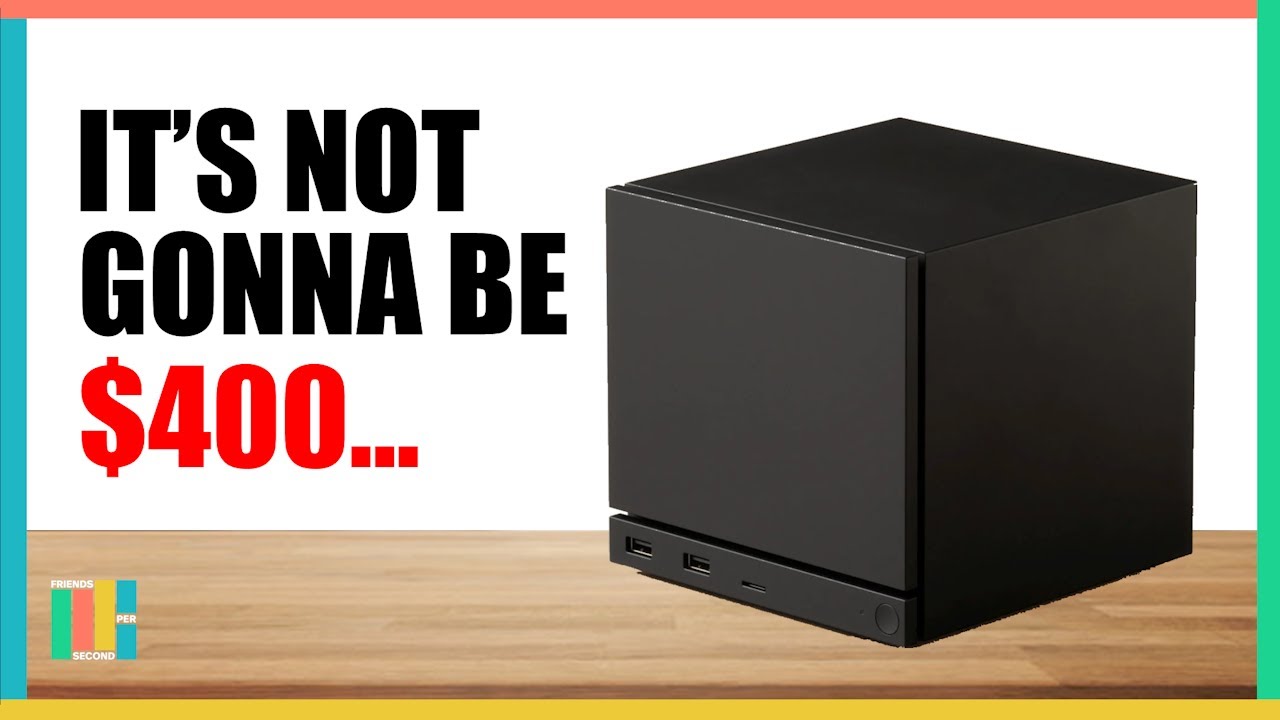- A Valve engineer has confirmed that the company will not subsidize the Steam Machine
- Hopes for a $500 price have faded
- The device will most likely cost upwards of $800, but Valve will look to add value in different ways compared to an equivalent gaming PC.
A Valve engineer has confirmed that the Steam Machine will not have its subsidized, console-style price, pouring cold water on the hopes of many that we could be looking at a $500 living room PC.
Wccftech highlighted an interview that YouTuber Skill Up conducted with Valve software engineer Pierre-Loup Griffais on the Friends Per Second podcast in which the topic of Steam Machine pricing and, specifically, the possibility of a Valve subsidy for the device was discussed.
The YouTuber asked, “But it’s not going to be some kind of subsidized device, like, Valve’s not going to go into this thinking we’re going to take a big loss so we can grow market share or category or something, right?”
Griffais responded: “No, it’s more in line with what you might expect from the current PC market. Obviously, our goal is for it to be a good deal at that level of performance.”
“And then you have features that are actually very difficult to build if you’re building your own gaming PC from parts. Things like the small form factor, the noise level we achieved, or lack thereof, is really impressive and we’re excited for people to discover how quiet this thing is.
“But also some integration features like HDMI CEC. The wireless and Bluetooth work we’ve done, the four antennas, the very deliberate design so you can have a great experience with four Bluetooth controllers.”
So that’s a clear ‘no’ in terms of there being a subsidy to keep the Steam Machine price in check, and it supports some other talk we’ve heard recently.
As mentioned at the beginning, the hope for many was the possibility of a $500 price, and Wccftech notes that this figure was mentioned by Linus Tech Tips in a room with some Valve employees and that the “energy wasn’t very good,” meaning it was apparently pretty clear that this was too low a figure.
The claim here that the price will be “in line with what you might expect from the current PC market” also echoes earlier statements about the Steam Machine being “very competitive with a PC you could build yourself from parts” (as Griffais said in a previous conversation with The Verge).

Look
Analysis: complex pricing equations and value added elsewhere
So what is the result here? Gamers now think Valve is looking more toward the $800 mark for the Steam Machine. And in fact, that was The Verge’s guess at what a comparable self-built PC might cost to offer the same kind of gaming performance as the AMD chips in the Steam Machine (which will have a semi-custom GPU from Team Red, it should be noted).
Remember, the Steam Machine is being marketed to be better than (or equal to) 70% of gaming PCs out there on Steam (according to Valve’s hardware survey). In other words, it won’t be a slouch, but clearly expectations need to be managed around the Zen 4 chip and RDNA 3 GPU, which some feel sound rather underpowered. (Some of the heavy lifting will be done on the software side, of course, with custom tuning for that GPU and AMD’s FSR.)
In any case, the intention now seems to be to strongly discourage any idea of a cheap price anywhere below the $500 level, and the idea that Valve could suffer losses on the hardware, because it will make money on the software. (Perhaps a lot of money on Steam game sales, of which Valve takes a 30% cut, for most but the best-selling games, if many Steam Machines make their way into living rooms around the world.)
What the Valve engineer seems to be saying here is that what you’re getting is a mini PC that costs the same as a larger, equivalently performing desktop gaming PC, but you’ll get a lot more benefits from the Steam Machine’s form factor and design.
The Steam Machine will be silent, compact and discreet (without power supply): it will integrate very well into the living room. The device will power on immediately, with an easy-to-use interface for your big-screen TV, and you’ll be able to resume a gaming session in the blink of an eye. Do you only have 15 minutes to play? No problem, you can jump right into a quick game during that short period of time you have before leaving the house.
Griffais also mentions HDMI CEC, which allows you to control the volume with the remote, for example, and automatically turn the TV on (or off) with Steam Machine (as already seen on Steam Deck). And also the design of the Bluetooth functionality to allow four wireless controllers.
These are the elements that will make up the “added value” of the Steam Machine over a regular gaming PC. We just have to hope that the end result will be as clever as Valve says it is here; although to be fair, the company achieved something special with the Steam Deck, and at a competitive price too, so hopefully the Steam Machine will eventually impress in the same vein.
That said, there was a lot of hope around that dream of a $500 living room PC (some even talked about $400, which never seemed remotely realistic), and now there are a lot of feelings of disappointment. Another potential hurdle is the price of memory, meaning RAM and storage could cost a lot more when the Steam Machine releases sometime in 2026.
That said, a comparable PC will also cost a lot more (and the console’s price will increase online, to some extent, no doubt), so Valve’s device should remain in roughly the same place, price-wise, in the gaming device landscape.
But those concerns about rising memory prices make it even harder to guess where Steam Machine prices might land, meaning the new $800 guesses (and don’t forget, it’s just speculation) could end up closer to the $1,000 mark.
Unfortunately, I fear the worst when it comes to this potential memory shortage and subsequent price-gouging complications, and that has repercussions not only for pre-built PCs and consoles, but for graphics cards as well. There are even rumors that some budget graphics card models could become endangered species as next year progresses.
There are some gloomy forecasts out there right now, and we can only hope that these concerns are overblown, but somehow, I doubt it.

The best PC drivers
Follow TechRadar on Google News and add us as a preferred source to receive news, reviews and opinions from our experts in your feeds. Be sure to click the Follow button!
And of course you can also follow TechRadar on TikTok for news, reviews, unboxings in video form and receive regular updates from us on WhatsApp also.



